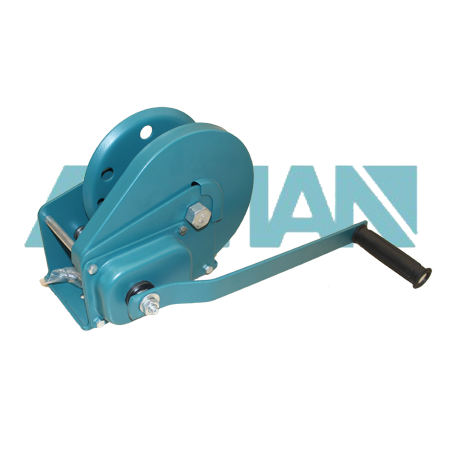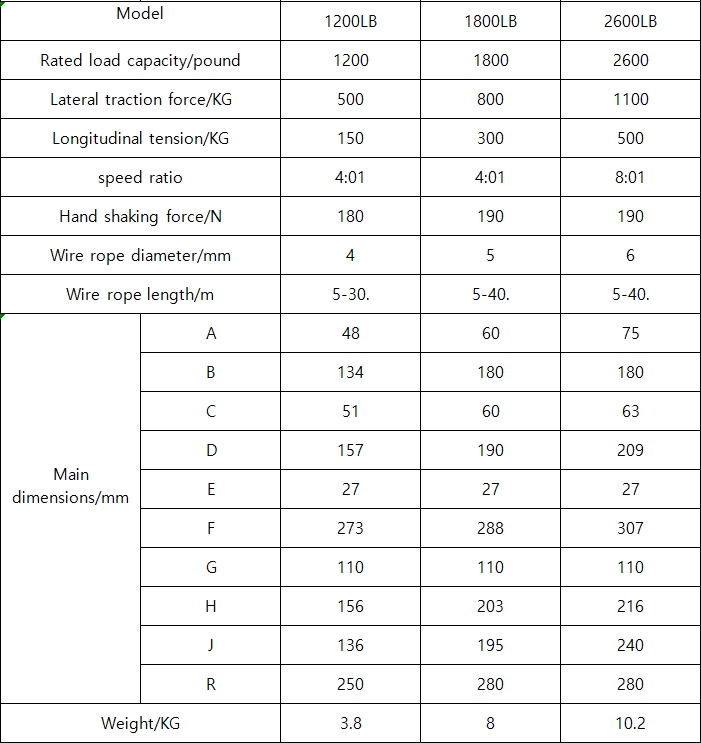 中文版
中文版



Welcome to contact us by phone:0086-0312-7969888
Using a manual winch safely and effectively requires attention to several important considerations. Here are key factors to pay attention to when using a manual winch:
Weight Capacity:
Ensure that the manual winch's weight capacity matches or exceeds the weight of the load you intend to lift or pull. Exceeding the rated capacity can lead to equipment failure and safety hazards.
Condition of Equipment:
Regularly inspect the manual winch for signs of wear, damage, or corrosion. Ensure that all components, including cables, hooks, and gears, are in good condition. Replace any damaged or worn parts before use.
Proper Mounting:
Mount the manual winch securely to a stable and strong anchor point. The mounting structure should be capable of handling the loads involved. Follow the manufacturer's guidelines for proper installation.
Anchor Points:
Choose anchor points that are solid and capable of withstanding the forces generated during winching. Avoid using weak or unstable anchor points that could fail under load.
Use of Safety Equipment:
Wear appropriate personal protective equipment (PPE), including gloves and safety glasses, when operating a manual winch. PPE helps protect against injuries from sharp edges, pinch points, or debris.
Operational Environment:
Consider the environmental conditions in which you are operating the manual winch. Factors such as weather, terrain, and visibility can affect safety. Take precautions in adverse conditions, and use the winch only in suitable environments.
Proper Technique:
Use proper winching techniques to maximize efficiency and safety. Ensure that the load is evenly distributed, and avoid sudden or jerky movements that could lead to equipment damage or personal injury.
Correct Handling of Cables:
Handle winch cables with care to prevent kinks, twists, or fraying. Inspect the cable before each use, and replace it if there are any signs of damage. Always spool the cable evenly onto the winch drum.
Controlled Operation:
Maintain control over the winching operation at all times. Use the winch at a steady and controlled pace, and avoid overloading or sudden releases of tension.
Capacity Limits:
Adhere to the specified capacity limits of the manual winch. Do not exceed the rated load capacity, and avoid using the winch for tasks beyond its designed capabilities.
Regular Maintenance:
Perform routine maintenance on the manual winch according to the manufacturer's recommendations. This may include lubrication of moving parts, inspection of gears, and checking for loose or damaged components.
Emergency Procedures:
Be familiar with emergency procedures in case of equipment malfunction or unexpected events. Know how to safely release tension, and have a plan for responding to emergencies.
Training and Familiarity:
Ensure that operators are trained and familiar with the operation of the specific manual winch model being used. Training helps prevent accidents and ensures efficient use of the equipment.
Supervision:
Have a qualified person supervise the winching operation, especially if it involves lifting or moving heavy loads. Supervision helps ensure safety and proper execution of the task.
By paying attention to these considerations, users can enhance the safety and effectiveness of manual winch operations. Always prioritize safety and follow the manufacturer's guidelines and recommendations for proper use.

X